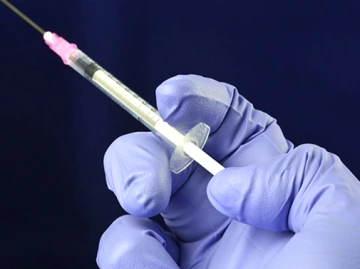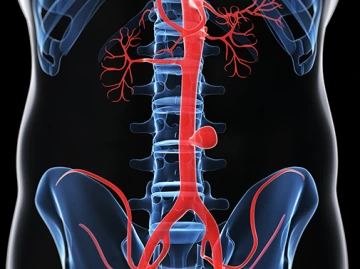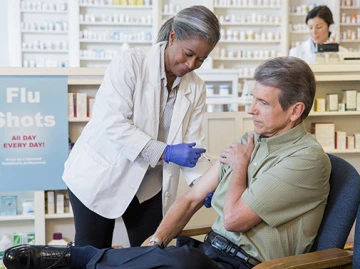Could Getting Your Flu Shot Help You Avoid a Silent Killer?
Not only does getting a flu shot significantly decrease your chance of getting the flu, but it protects others around you from infection as well.


Recent research has shown that aortic aneurysm ruptures often closely follow a bout of flu.
Health experts say it is never too late to get a flu shot, which can protect you in ways that may surprise you. Not only does getting a flu shot significantly decrease your chance of getting the flu, but it protects others around you from infection as well.
If that weren’t reason enough to get a flu shot, here’s one more. Did you know that vaccination could potentially reduce the risk of a silent killer?
Although the connection is not yet clearly understood, recent research has shown that aortic aneurysm ruptures often closely follow a bout of the flu.
Your heart is the most important muscle in your body. The aorta, the largest artery in the heart, is about the thickness of a garden hose and runs from your heart through the center of your chest and abdomen. Because the aorta is the body's main supplier of blood, a ruptured abdominal aortic aneurysm can cause life-threatening bleeding.
Aortic aneurysms occur when the wall of the aorta weakens, causing it to bulge or become enlarged. Aortic aneurysms occur in two locations: the chest (thoracic aortic aneurysm) and the abdomen (abdominal aortic aneurysm).

Aortic aneurysms occur when the wall of the aorta weakens, causing it to bulge or become enlarged. Aortic aneurysms occur in two locations: the chest (thoracic aortic aneurysm) and the abdomen (abdominal aortic aneurysm).
Because people with aneurysms rarely show symptoms, it usually isn't found during routine check-ups. If detected early, it’s usually because the aneurysm occurs in conjunction with a valve condition or another heart condition and is diagnosed by a cardiologist during an echocardiography, or echo. An echo is a painless test using sound waves to create moving pictures of your heart.
The most effective way to treat aortic aneurysms before they become a critical problem is to encourage people with major risk factors to undergo screening. Aortic aneurysms most commonly occur in men in their 60s, 70s, and 80s but can affect individuals as young as 20 or 30 if linked to a congenital condition, such as Marfan syndrome, an inherited disorder that affects a person’s connective tissue — the fibers that support and anchor organs.
Guidelines suggest abdominal ultrasound screening for all men between the ages of 60-65 to reduce the severity of potential complications. While people with congenital conditions may receive more medical attention early on in life, they should continue to be examined for aneurysms throughout their lifetime.

Getting a flu shot significantly decreases your chance of catching the flu as well as protecting others around you from infection.
- Family history of aneurysm
- High blood pressure
- Obesity
- Smoking
- Valve disease (heart murmur)
- Bicuspid valve
- Congenital heart conditions
- History of recurring upper-respiratory infections
- Aneurysm osteoarthritis
If aortic aneurysms are small and detected early, medical treatment can prevent or slow down growth and reduce the risk of tear or rupture. Blood pressure medications, beta blockers and calcium channel blockers are the most common treatments. Otherwise, elective surgery can repair the aneurysm. The good news is that outcomes are promising if the aneurysm is corrected before it becomes a life-threatening emergency.
Although aortic aneurysms are rare, they can be life-threatening if left untreated. Getting a flu shot is one quick and easy way to reduce your risk and increase your chances of a long, happy and healthy life.
About the Author
David A. Bull, MD, is a professor of surgery and chief of the Division of Cardiothoracic Surgery. He is also the Sarver Heart Center Jack G. Copeland Endowed Chair of Cardiothoracic Surgery and Michael Drummond Distinguished Professor of Cardiovascular and Thoracic Surgery. His specialties include aortic surgery, valvular heart disease, adult congenital heart disease, heart transplantation and mechanical circulatory support.

